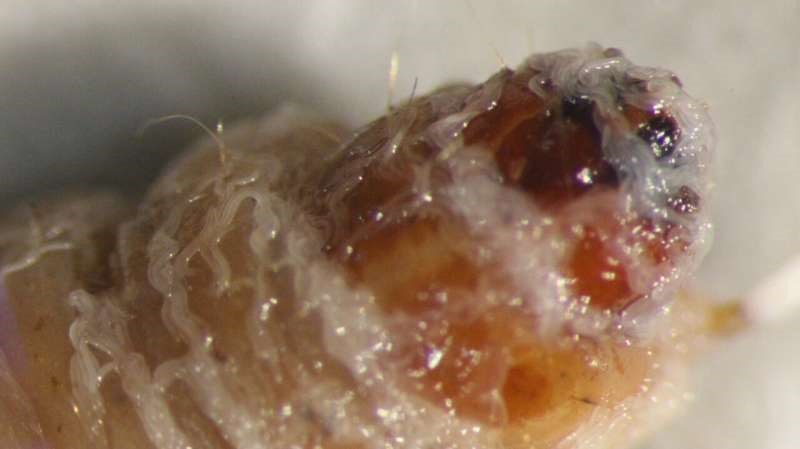
Steinernema adamsi

10.02.2024
Steinernema adamsi , Daily Current Affairs , RACE IAS : Best IAS Coaching in Lucknow
|
For the Prelims:About Nematodes,Features,Significance,Key facts about Steinernema adamsi |
Why in the news?
Scientists at the University of California, Riverside have unveiled a new species of nematode, Steinernema adamsi, a minuscule yet potent ally in the battle against crop pests.
About Nematodes:
- These are any worm of the phylum Nematoda.
- Nematodes are among the most abundant animals on Earth.
- They occur as parasites in animals and plants or as free-living forms in soil, fresh water, marine environments, and even such unusual places as vinegar, beer malts, and water-filled cracks deep within Earth’s crust.
Features:
- Nematodes are bilaterally symmetrical, elongate, and usually tapered at both ends.
- Some species possess a pseudocoelom , a fluid-filled body cavity between the digestive tract and the body wall.
- Nematodes have been reported from every continent on earth and occur in deserts, swamps, the oceans, the tropics and Antarctica.
- Nematode parasites of animals occur in almost all organs of the body, but the most common sites are in the alimentary, circulatory, and respiratory systems. Some of these worms are known by such common names as hookworm, lungworm, pinworm and threadworm
- They can cause a variety of diseases (such as filariasis, ascariasis, and trichinosis) and parasitize many crop plants and domesticated animals.
Significance:
- Most nematodes feed on bacteria, fungi, or other microscopic creatures. As such, they are a major component of soil and sediment ecosystems.
Key facts about Steinernema adamsi:
- This new species is a member of a family of nematodes called Steinernema that have long been used in agriculture to control insect parasites without pesticides.
- Steinernema are not harmful to humans or other mammals and were first discovered in the 1920s.
- This new species is part of a special group of nematodes considered beneficial to humans because it can infect and kill insect pests
- It is an entomopathogenic nematode that crawls inside of an insect, defecates highly pathogenic bacteria into its blood and then combines with that bacterium to kill the insect host.
Source: phys.org